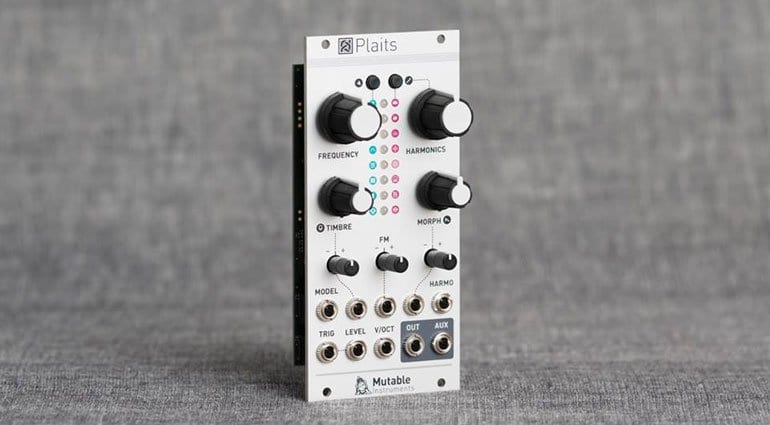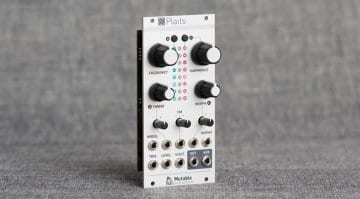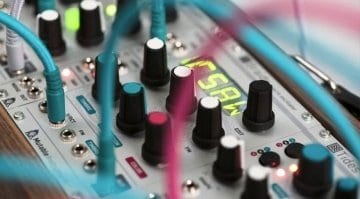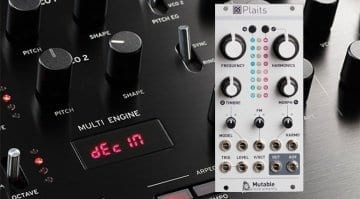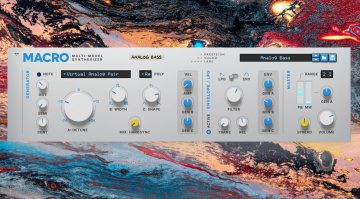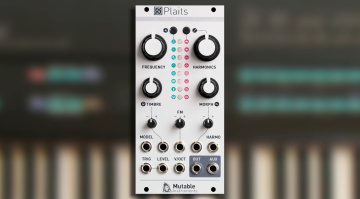Mutable Instruments restyles Braids into the Plaits Macro-Oscillator
After the shock discontinuation of their popular Braids oscillator, it is with some joy that we receive the news of its spiritual successor – Plaits. Mutable Instruments say it’s not a MkII, this has been redesigned from scratch.
Plaits
The screen has gone, so has the menu system, hidden settings and some of the more redundant synthesis modules. Instead what you get is a streamlined, playful oscillator with simple controls and an intuitively inviting look.
Plaits is a macro-oscillator, meaning that it contains a whole load of synthesis models to choose from. 16 to be exact – 8 melodic and 8 percussive. The list of pitched oscillators is quite exciting to read:
- Two detuned virtual analog oscillators with continuously variable waveforms.
- Variable slope triangle oscillator processed by a waveshaper and wavefolder.
- 2-operator FM with continuously variable feedback path.
- Two independently controllable formants modulated by a variable shape window (VOSIM, Pulsar, Grainlet, Casio CZ-style filter sweeps).
- 24-harmonic additive oscillator.
- Wavetable oscillator with four banks of 8×8 waves, with or without interpolation.
- Chord generator, with divide down string/organ emulation or wavetables.
- A collection of speech synthesis algorithms (formant filter, SAM, LPC), with phoneme control and formant shifting. Several banks of phonemes or segments of words are available.
One the noise and percussion side we have:
- Granular sawtooth or sine oscillator, with variable grain density, duration and frequency randomization.
- Clocked noise processed by a variable shape resonant filter.
- 8 layers of dust/particle noise processed by resonators or all-pass filters.
- Extended Karplus-Strong (aka Rings’ red mode), excited by bursts of white noise or dust noise.
- Modal resonator (aka Rings’ green mode), excited by a mallet or dust noise.
- Analog kick drum emulation (two flavors).
- Analog snare drum emulation (two flavors).
- Analog high-hat emulation (two flavors).
Modulation and control
The controls are simple, there’s only 4 and they pretty much speak for themselves although they do take on slightly different roles depending on the model selected. They are labelled Pitch, Harmonics, Timbre and Morph. They all have CV control including a direct CV input to select the model – something that was difficult to achieve on the Braids. There’s also a CV control for “Level” which alters the amplitude and brightness of the output signal. Talking of outputs there’s an intriguing “Aux” output which apparently carries a variant or by-product of the main signal.
Plaits vs Braids?
Mutable Instruments are at pains to say that Plaits shares no hardware or software with Braids. They share a concept but nothing else. The DSP code is inherited from Elements, Warps and Rings along with some new stuff. Quality of the output is better, less aliasing, DC Coupled so it can go down to LFO rates. It’s also smaller and takes less power.
I have no doubt that this will become the standard multi-function multi-synthesis oscillator that will inhabit even the smallest of racks. It’s exactly what Mutable needed to do, and here it is.
Plaits will be available in a week for €229.
More information
- Mutable Instruments Plaits webpage.
Video
It’s not a very exciting video but hopefully more will be along soon!
You are currently viewing a placeholder content from YouTube. To access the actual content, click the button below. Please note that doing so will share data with third-party providers.
